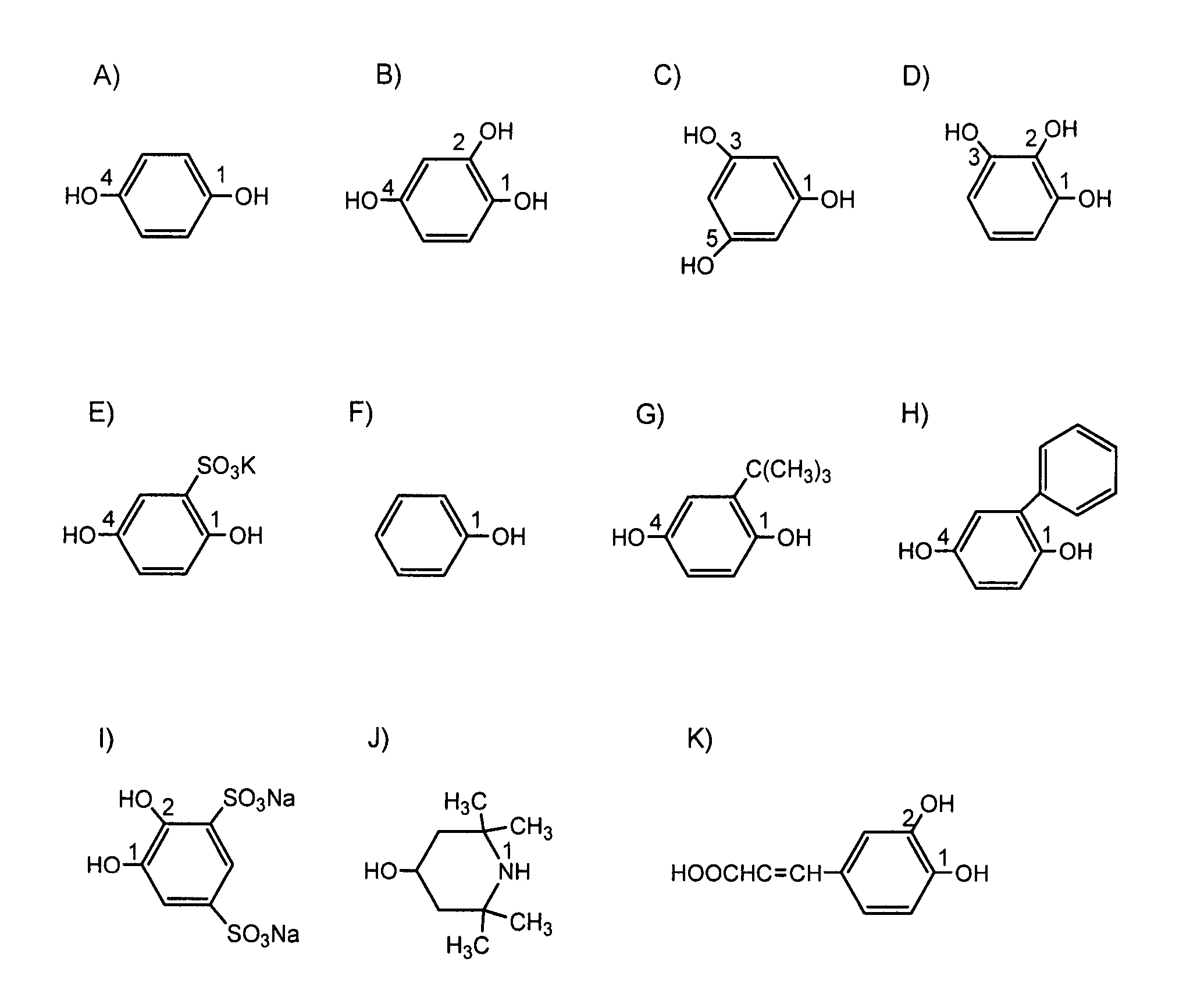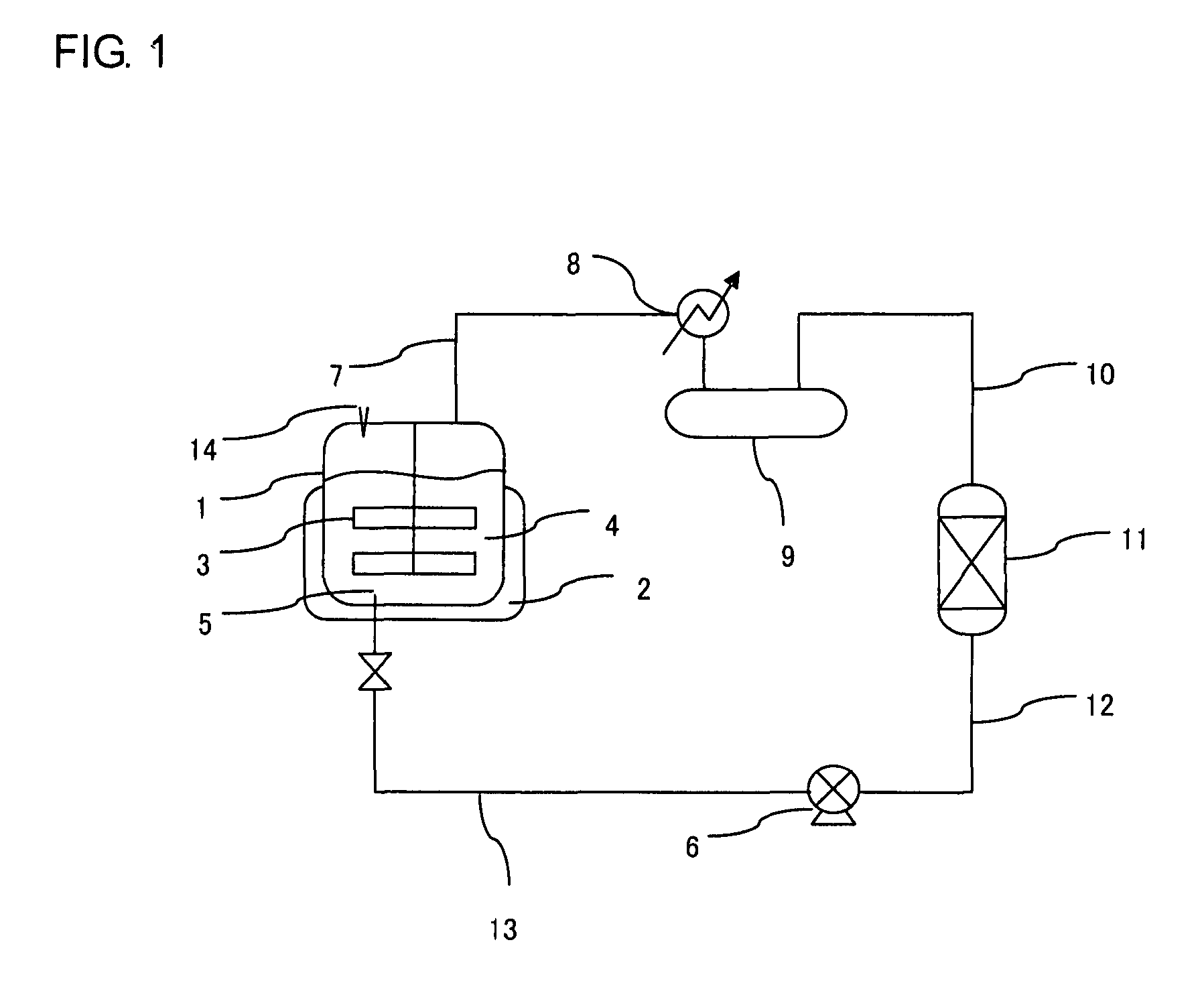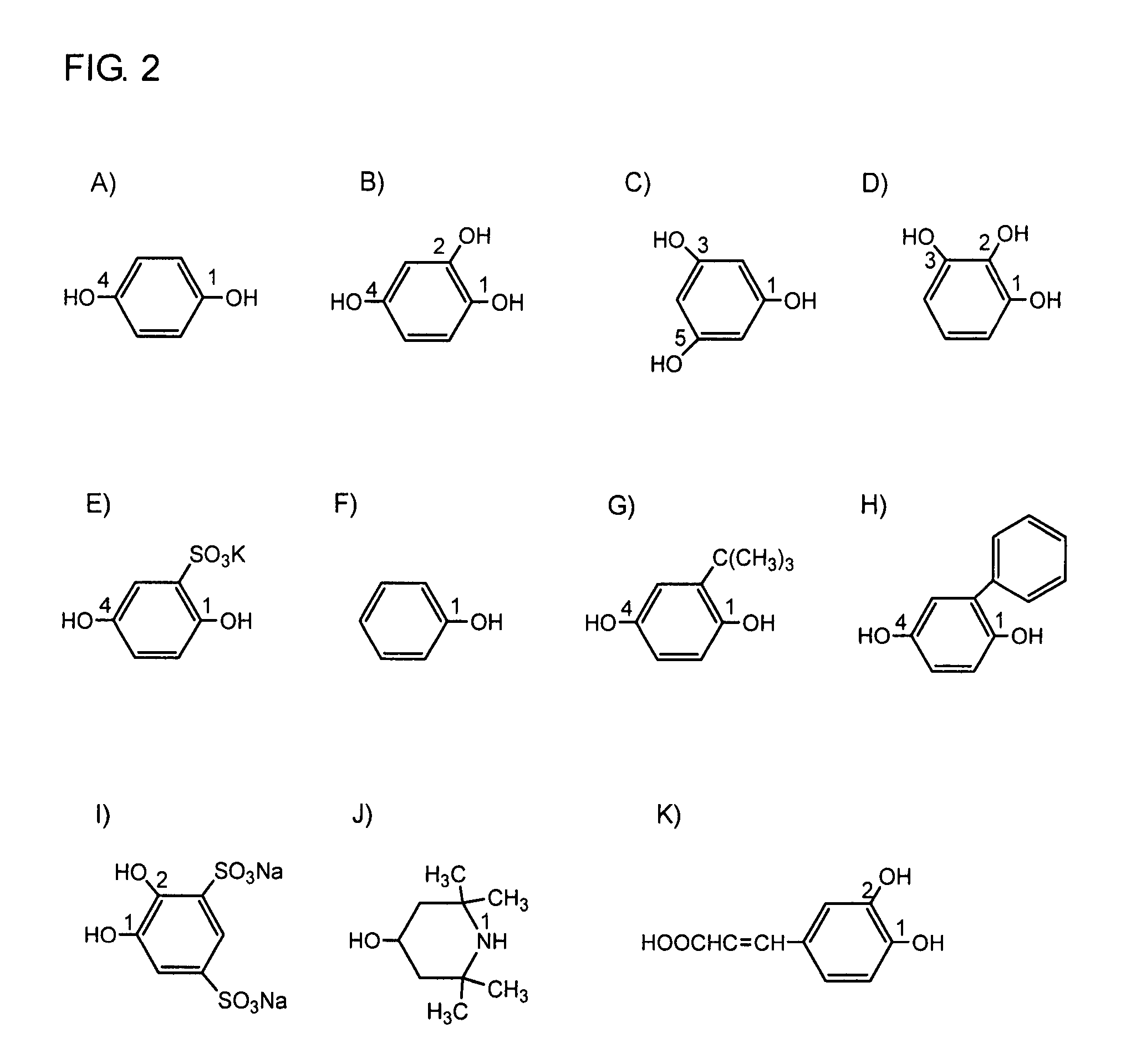Production method of toner for developing electrostatic image
a production method and technology for toners, applied in the field of toners for developing electrostatic latent images, can solve the problems of large energy consumption for pulverization, low yield, and decrease in yield of toners with a small particle diameter, and achieve excellent shelf stability at high temperature, easy washing, and excellent yield
- Summary
- Abstract
- Description
- Claims
- Application Information
AI Technical Summary
Benefits of technology
Problems solved by technology
Method used
Image
Examples
example 1
[0178]75 parts of styrene and 25 parts of n-butyl acrylate as monovinyl monomers, 7 parts of carbon black (product name: #25BS; manufactured by: Mitsubishi Chemical Corporation) as a black colorant, 1 part of a charge control resin (a styrene / acrylic resin; product name: FCA-207P; manufactured by: Fujikura Kasei Co., Ltd.) and 5 parts of dipentaerythritol hexamyristate as a release agent were agitated, mixed together and uniformly dispersed to prepare a polymerizable monomer composition.
[0179]Separately, an aqueous solution of 4.8 parts of sodium hydroxide dissolved in 50 parts of ion-exchanged water was gradually added to an aqueous solution of 8.5 parts of magnesium chloride dissolved in 170 parts of ion-exchanged water while agitating to prepare a magnesium hydroxide colloid (hardly water-soluble metal hydroxide colloid) dispersion liquid.
[0180]The polymerizable monomer composition was charged into the magnesium hydroxide colloid dispersion liquid thus obtained and agitated at ro...
example 2
[0192]A toner of Example 2 was produced in the same condition as in Example 1 except that the added amount of the potassium hydroquinone sulfonate represented by the Formula 10, which is an inhibitor of small diameter microparticle production, was changed to 0.3 part.
example 3
[0193]A toner of Example 3 was produced in the same condition as in Example 1 except that the inhibitor of small diameter microparticle production was altered to hydroxyhydroquinone represented by the following Formula 11:
[0194]
PUM
| Property | Measurement | Unit |
|---|---|---|
| reaction activation energy Emin | aaaaa | aaaaa |
| octanol/water partition coefficient logP | aaaaa | aaaaa |
| logP | aaaaa | aaaaa |
Abstract
Description
Claims
Application Information
 Login to View More
Login to View More - R&D
- Intellectual Property
- Life Sciences
- Materials
- Tech Scout
- Unparalleled Data Quality
- Higher Quality Content
- 60% Fewer Hallucinations
Browse by: Latest US Patents, China's latest patents, Technical Efficacy Thesaurus, Application Domain, Technology Topic, Popular Technical Reports.
© 2025 PatSnap. All rights reserved.Legal|Privacy policy|Modern Slavery Act Transparency Statement|Sitemap|About US| Contact US: help@patsnap.com



